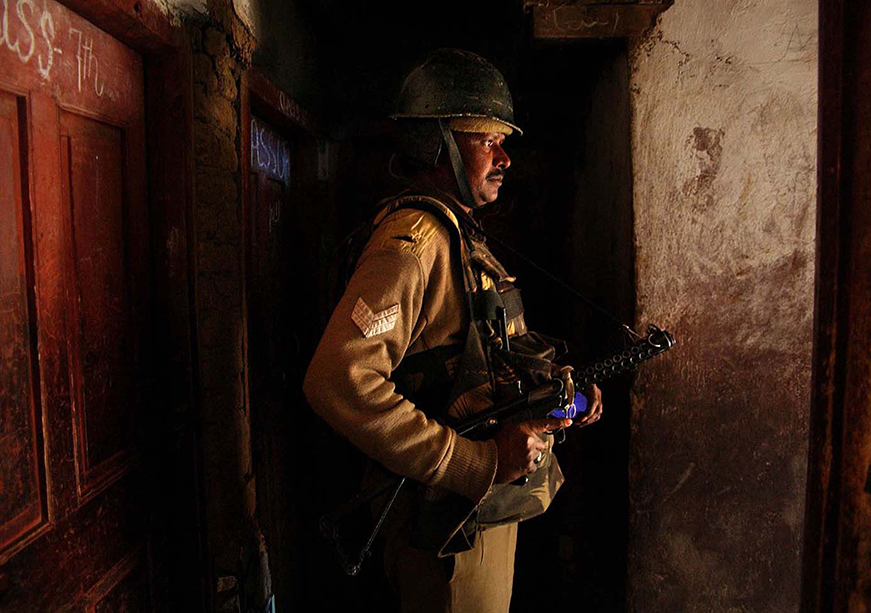-
CENTRES
Progammes & Centres
Location
Rather than proceeding with the Chinese notion of civil-military fusion, national security fusion is the best framework for India’s complex and vast national security needs

Image Source: Getty
As 2024 comes to an end, the concepts of ‘security’ and ‘defence’ are undergoing rapid metamorphosis among nations. The gamut of threats has multiplied in diversity, saturating security and defence preparedness and posturing across the world: The assassination attempts on United States (US) President Donald Trump, the sudden collapse of President Bashar al-Assad’s long-running government in Syria, the deceptive pager attacks by Israel on the entire Hamas leadership, the sabotage of submarine optic fibre cables in the Baltic and Africa’s Atlantic seaboard, the wildfires in California, the distributed-denial-of-service attack on global Microsoft systems, the alleged foreign interference in India’s vibrant general elections, the six back-to-back typhoons making landfall in the Philippines, the precipitous collapse of democracy and human rights in Bangladesh, the several unidentified aerial phenomena in United Kingdom (UK) and North America, and the back-to-back hypersonic missile tests done by several countries. What does India make of this saturation in threats?
One podcast episode by a supposedly ex-Central Intelligence Agency operative was well-received in India when he called India’s intelligence agency and foreign policy ‘powerfully pragmatic’.
Podcasts have been a rage in 2024, and there is no doubt that they are here to stay for a long time. One podcast episode by a supposedly ex-Central Intelligence Agency operative was well-received in India when he called India’s intelligence agency and foreign policy ‘powerfully pragmatic’. Now that India has to live up to the positive image it has built, one-course correction must follow —it must not work on civil-military fusion but national security fusion.
Most of us know that the 2015 Defence White Paper of the Central Military Commission of China first spoke at length about civil-military integration. We know very well now that civil-military integration was a construct of Deng Xiaoping, while civil-military fusion was the signature of Xi Jinping. Most Indian think tankers, between 2015 and 2020, have read the Washingtonian inputs on civil-military fusion, the briefings of Bitzinger, Kania, and Stokes. By the end of 2024, however, India is now wide awake to the new realities: there’s no substitute for original think-tanking, and India should not mimic China’s civil-military fusion, but take on a broader approach—national security fusion.
The idea of merging military and civil domains to serve security interests is not new and, in reality, has no Chinese origins. In 1940, when the Second World War commenced, US President Roosevelt ordered the establishment of the Office of Emergency Management to develop synergies between the US government’s various agencies and synthesise information on their national defence strategies. Immediately the next year, in 1941, a new office, the Office of Scientific Research and Development (OSRD), was established to monitor the research and development (R&D) output necessary to fight the war. It was this OSRD that oversaw the Manhattan Project. A year later, in 1942, the War Production Board was created to ensure that civilian industries were deployed for war-time manufacturing and to maintain a steady supply chain of war-essential materials. After the war, the War Production Board was transmuted into the Civilian Production Administration. The new entity did not last long. The 1950 Korean War stimulated the Defence Production Act, which for the first time defined, in the US, the meaning of a ‘defence industrial base’ or what later President Dwight Eisenhower called the ‘military industrial complex.’
In 1940, when the Second World War commenced, US President Roosevelt ordered the establishment of the Office of Emergency Management to develop synergies between the US government’s various agencies and synthesise information on their national defence strategies.
The Act defined the defence industrial base as “domestic sources which are providing, or which would be reasonably expected to provide materials or services to meet national defence requirements during peacetime, national emergency or war.” In the post-1950 amendments to the Act, legislation provided opportunities for small businesses to contribute as contractors and subcontractors to ensure the accelerated production of materials needed for comprehensive national security. The US, a mature democracy, never mentioned civil and military with two separate connotations until recently when the Chinese began doing so.
China took a leaf from the US ‘defence industrial base’ concept when, in 1997, the Sixteen Character Policy was formulated. The policy said the following in sixteen Chinese characters:
“Combine the Military and Civil;
Combine Peace and War;
Give Priority to Military Products;
Let the Civil Support the Military”
In President Xi Jinping’s understanding, the goal of civil-military fusion is for China to implement key science and technology projects, racing to occupy the strategic high ground for innovation and exploit the “short period of strategic opportunity” to become a world-class defence technological leader and a dominant global military power.
With China, we must understand that civil and military are indeed two different limbs: the ‘civil’ belongs to the State Council while the ‘military’ belongs to the Central Military Commission, and both belong to the torso that is the Communist Party of China. For a political system that controls the two, a civil-military integration or a civil-military fusion makes sense. However, does it work well for a democratic India? India’s military does not serve a political party, in or outside the government, and neither is India a one-party nation-state. Rather, India is a nation with inherent democratic attributes. It, therefore, does not suit Indian think tankers, including myself, to unintelligibly use Chinese-origin terms to leverage the strengths of its independent businesses and innovators. In that regard, we must attempt to use a more pertinent concept: National security fusion.
With China, we must understand that civil and military are indeed two different limbs: the ‘civil’ belongs to the State Council while the ‘military’ belongs to the Central Military Commission, and both belong to the torso that is the Communist Party of China.
The national security fusion is ‘a system of systems that seamlessly converges the theoretical, economic, and hands-on scientific, technological, engineering, and mathematics prowess in India - emerging from both governmental and non-governmental efforts and those coming from overseas in an impregnable manner to be put into applications concerning all extant, emerging, and tangential facets of India’s comprehensive national security.’
National security fusion could be ‘India’s innate effort to fuse all the needed philosophical, theoretical and practical capabilities from all entities, large and small, private and non-private, for-profit and not-for-profit, startups and conglomerates, to supply towards meeting encyclopedic goals of India’s national security.’
Indeed, India’s comprehensive security needs are not restricted to the conventional military domains. Cyber, artificial intelligence, space, special operations, biowarfare, chemical warfare, environmental security, pandemics, planetary defence, extreme space weather, planetary protection, nuclear-biological-chemical (NBC) events, economic attacks, and Black Swan events like those mentioned earlier in the article, will demand the entire national security apparatus of the country to synergise governmental and non-governmental efforts. Such synergies are only possible when preparedness for fast-evolving national and global security threats is carried with a whole-of-nation approach, and this is only possible for a democratic India through the concept of “national security fusion”. A wholly Indian concept will not only strengthen the positive narrative but also ensure that India is ‘powerfully pragmatic’.
Note: Adapted from the author’s book chapter in the book “Beyond the Blue Yonder: A Curated Anthology of Writings on Space” Edited by TH Anand Rao and Niti Jha and published by the Centre for Air Power Studies, New Delhi and KW Publishers, New Delhi.
Chaitanya Giri is a Fellow with the Centre for Security, Strategy and Technology at the Observer Research Foundation
The views expressed above belong to the author(s). ORF research and analyses now available on Telegram! Click here to access our curated content — blogs, longforms and interviews.

Dr. Chaitanya Giri is a Fellow at ORF’s Centre for Security, Strategy and Technology. His work focuses on India’s space ecosystem and its interlinkages with ...
Read More +